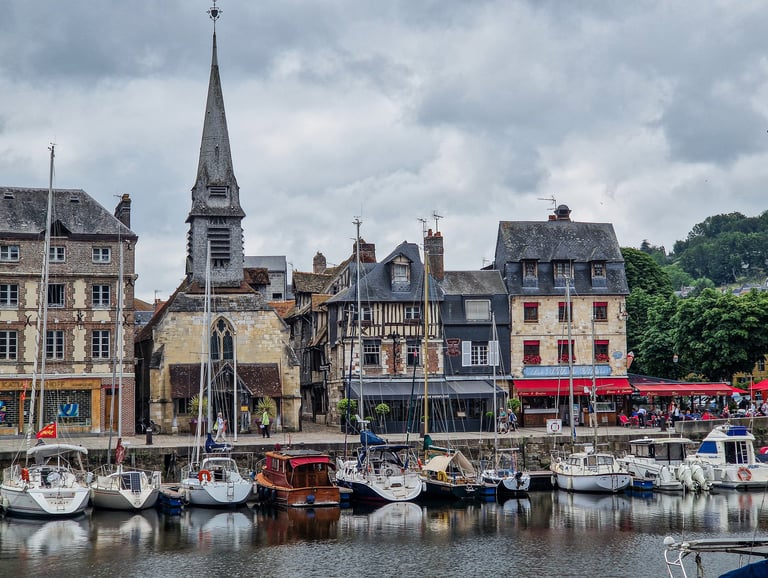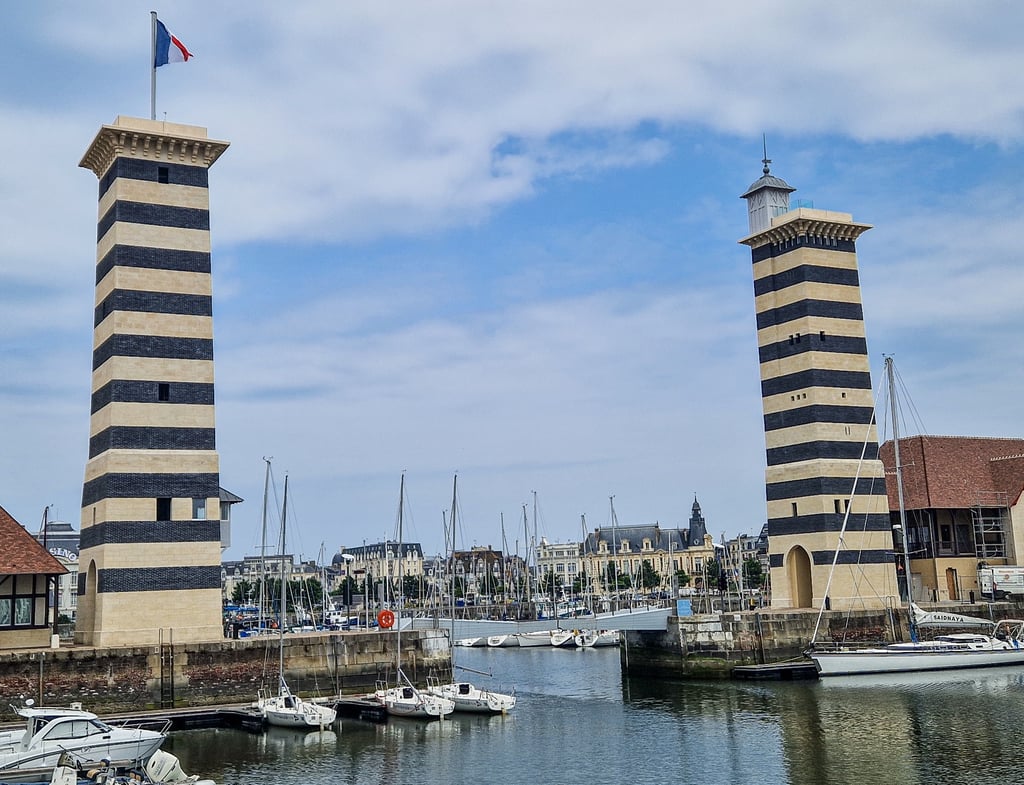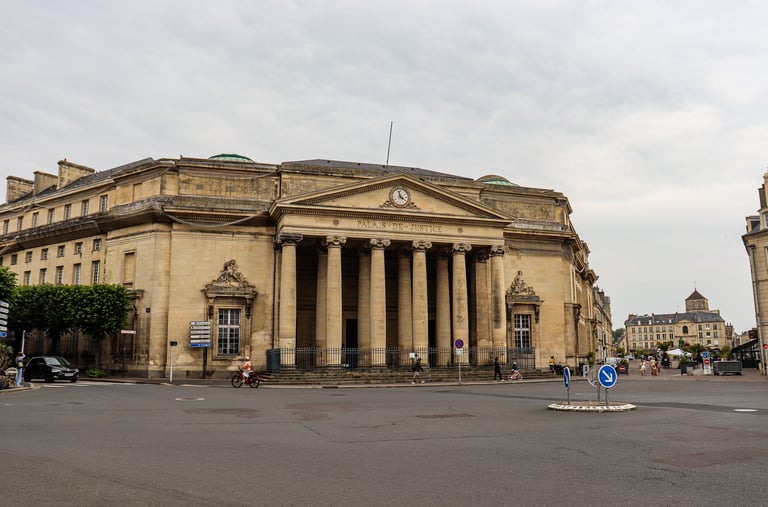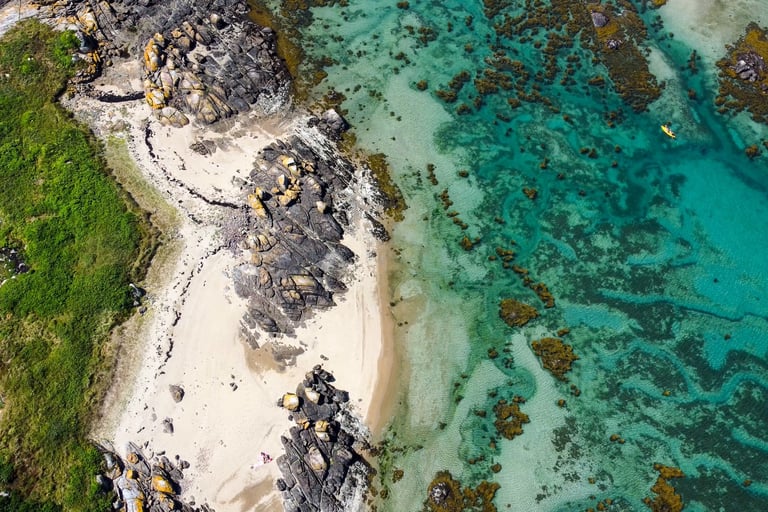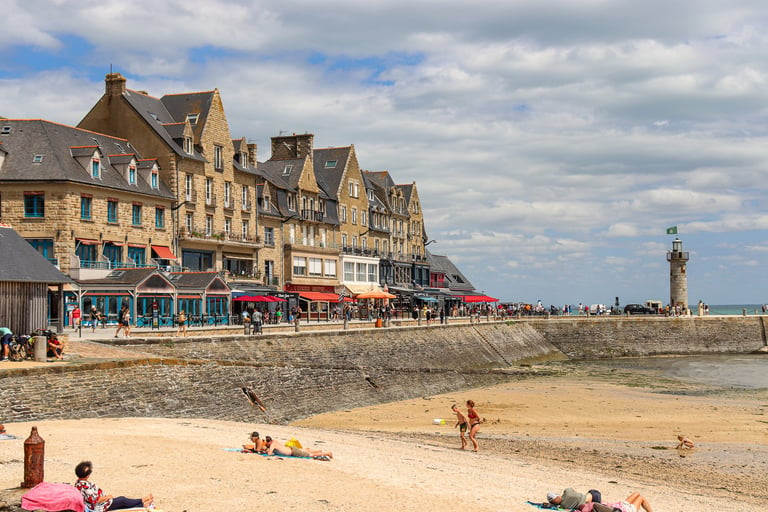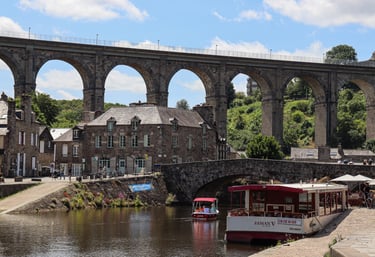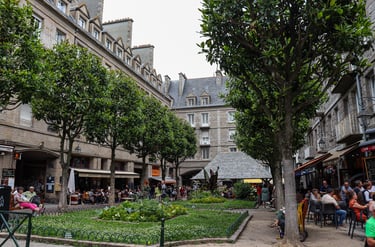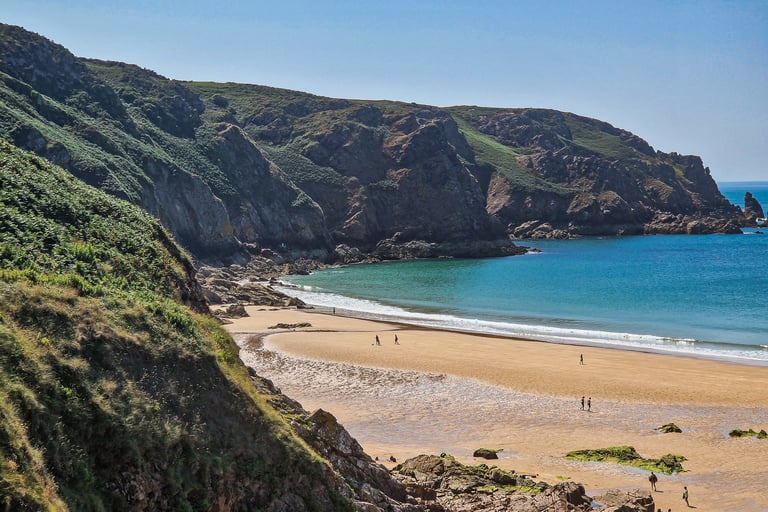
NORMANDY

NORMANDY
Normandy itinerary & things to do
Normandy is an old-school holiday destination. Not for sunbathers, but for those who like exploring little towns, beautiful coastlines and historical sites. In this Normandy itinerary, we share the best sights to see and things to do, including both touristic sites like Mont Saint-Michel and the D-day beaches, and lesser-known areas such as the Manche peninsula.
Normandy: great for some easy-going road-tripping
The Normandy region in France's north-west is a classical holiday destination. In the 1800s, the elite of Paris would already go to the seaside of Normandy to spend a luxury summer holiday at the beach. The remnants of this grand past are still visible in beautiful towns like Mers-les-Bains and Veules-les-Roses. Other famous destinations are Mont-Saint-Michel, the white cliffs of Étretat and the D-day landing beaches.
As many people prefer the more sunny parts of France, you will not find many crowds in Normandy. This is exactly what makes it such a pleasant region to explore. Depending on your preference, you can either hop from sight to sight or take it slow. Normandy is great for any type of budget, as there are plenty of B&Bs as well as cheap campsites.
In this Normandy itinerary, we share the best places to visit and things to do!

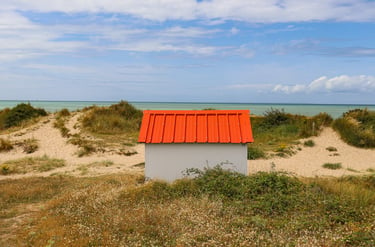
Recommended itinerary
The approximate total length of the trip is two weeks, depending on your travel pace and additions. You can switch them around, but a logical order is:
At the end of the blog, you'll find some possible additions to this route, including a visit to the Brittany region and the Channel Islands.

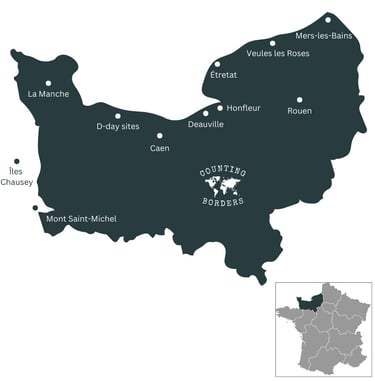

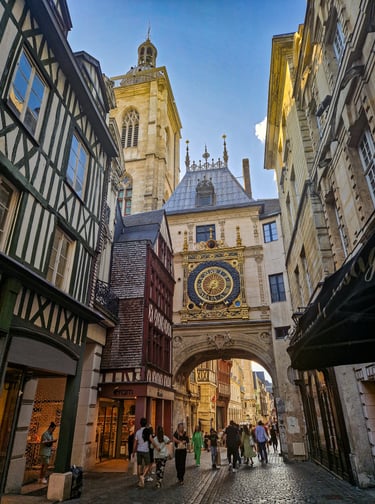

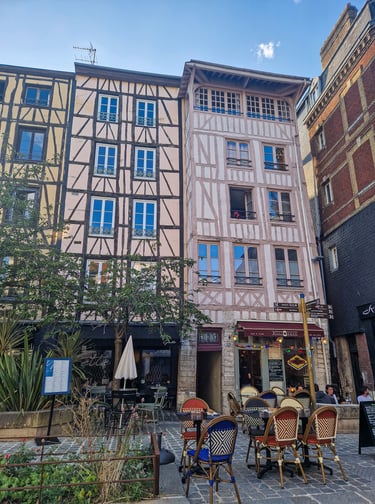
Rouen
Rouen is a great place to start or end your visit to Normandy. It's a medieval city full of colourful timbered houses. Visiting Rouen feels like you're teleported back in time. It has not one, but three impressively large churches. We visited the Notre-Dame Cathedral, which was one of the biggest we had ever seen and which had a beautiful and unique Harry Potter-like staircase.
Other highlights were the Renaissance clockwork, the Jeanne d'Arc church which is shaped like a knight helmet, and the Peace Palace of which the walls are full of bullet holes, some filled with colourful Lego pieces as artwork. The architecture of Rouen makes it very fun to just wander around, exploring different streets.
When looking for restaurants, for which we always use very strict selection criteria (score of 4.3/5 at least), we found that literally over 50 restaurants were rated highly. Besides a great culinary scene with many typical French as well as international restaurants, Rouen also has many bars. Some are hidden in cozy streets and some are located at lively squares. An afternoon in Rouen is an afternoon well spent!
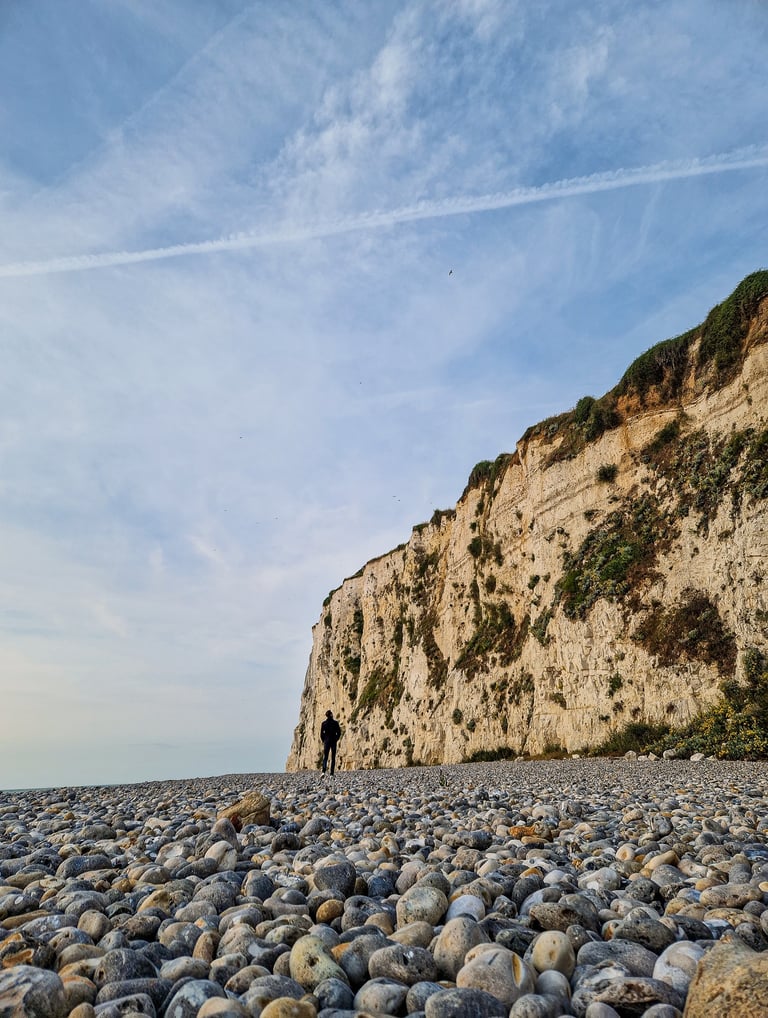

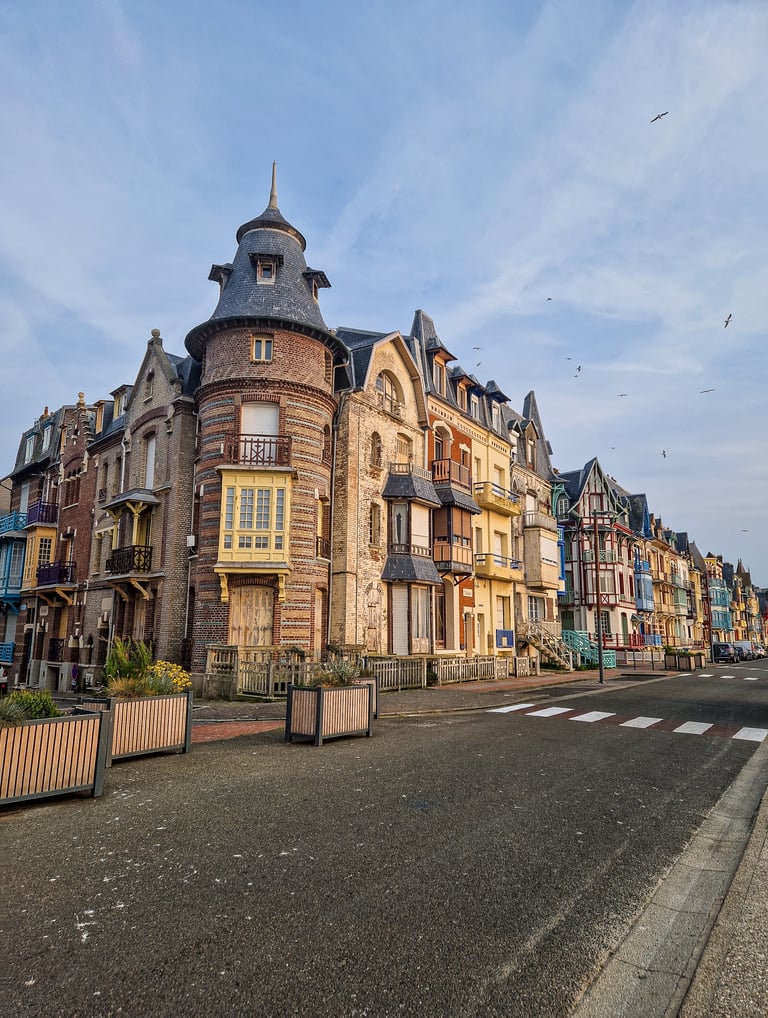

Mers-les-Bains & Le Tréport
Mers-les-Bains and Le Tréport are two bordering seaside towns, separated by a river (like many other 'twin towns' in this region). Le Tréport has a cable car to the top of the town, from where you can view the impressive white limestone cliffs. Mers-les-Bains is an enchanting little Belle Époque (literally meaning 'beautiful period') town, which used to be the place where rich Parisians would spend their summer holidays.
All the villa-like houses are in Art Nouveau style, but not always well-maintained and many seem to be deserted. This creates a mysterious atmosphere when walking around the quiet streets. It is almost impossible not to take many pictures, as the combination of old architecture and white cliffs is just too photogenic.
At the end of the boulevard, near the cliffs, you'll find an amazing restaurant called Les Mouettes. Here, you can enjoy a delicious regional version of mussels with camembert and apple. The combination might sound strange, but it is truly incredible. If you don't mind spending a bit too much money while enjoying the sunset, the trendy beach bar La Belle Plage La Belle Vie seems like the place to be. Camping Les Boucaniers might not be the nicest but is really strategically located, just a short walk away from the two towns.
Veules-les-Roses
We almost skipped the tiny town called Veules-les-Roses, as the Google Maps images didn't do it much justice. However, upon reaching the town, we were very happy we decided otherwise. We thought it looked quite similar to the English Cotswolds because of all the beautiful old country houses with wooden accents. It's one of the oldest towns in the region and used to be a popular holiday destination for the elite, which is why there are so many Belle Epoque houses here as well.
It's also home to the smallest river in France, namely the Veules, which is a little over a kilometre long. The river starts from a spring at the beginning of the town and meanders its way all the way through before flowing into the sea. All the houses seem to be built around it and the combination with plenty of flowers creates a very picturesque site. It almost seems like an open-air museum.
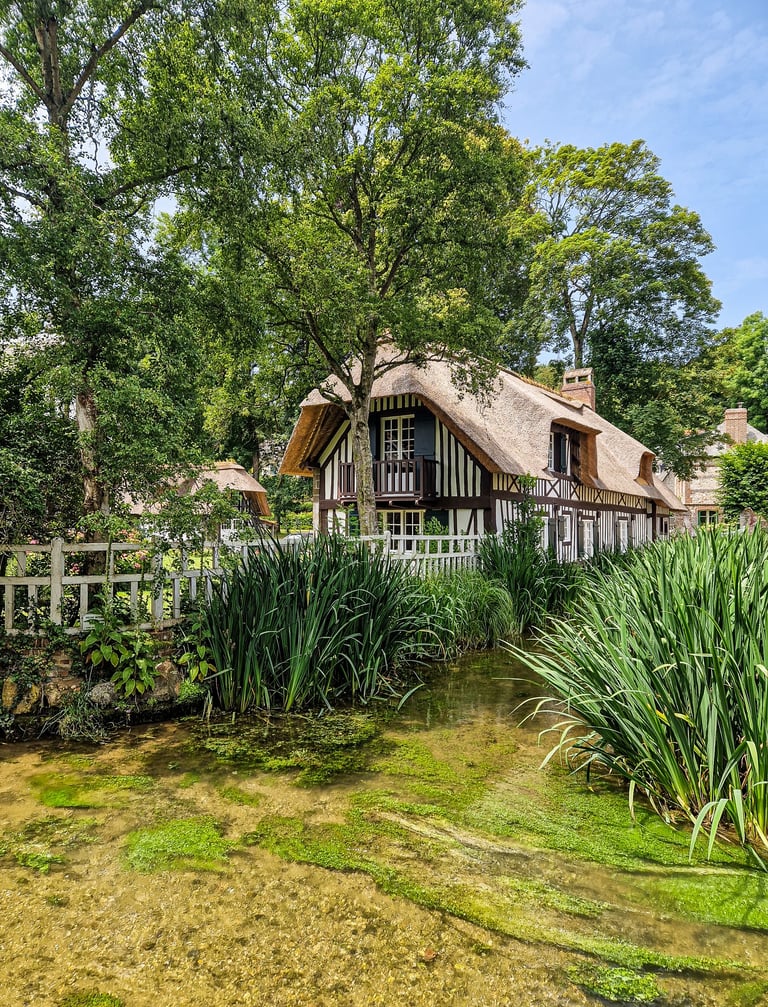

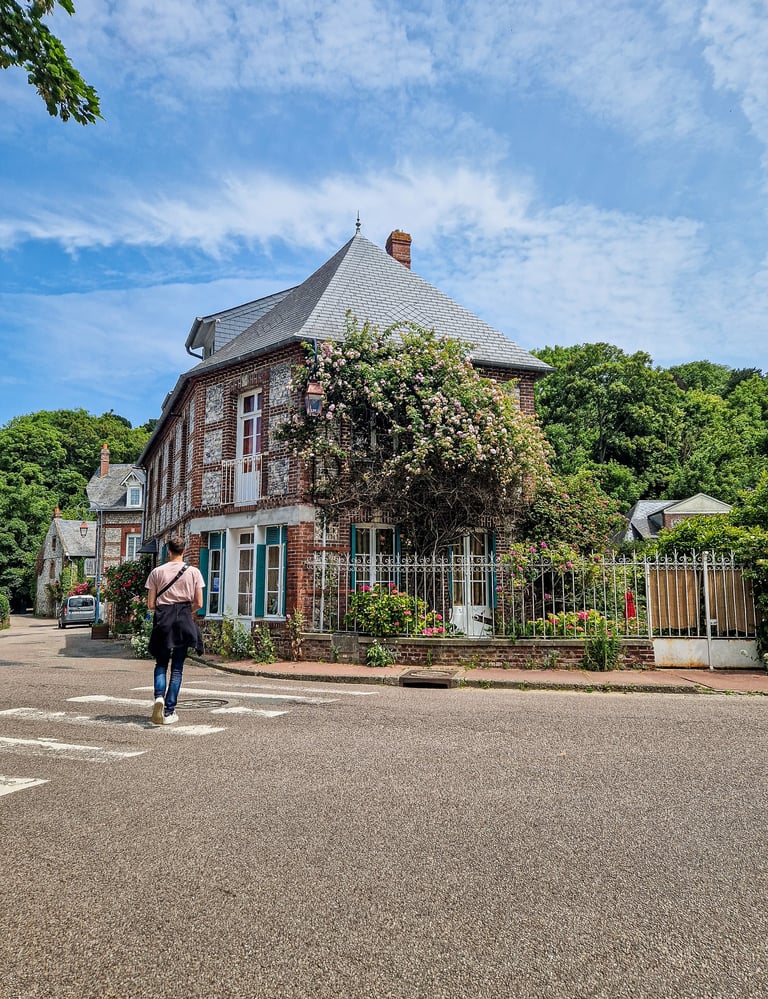

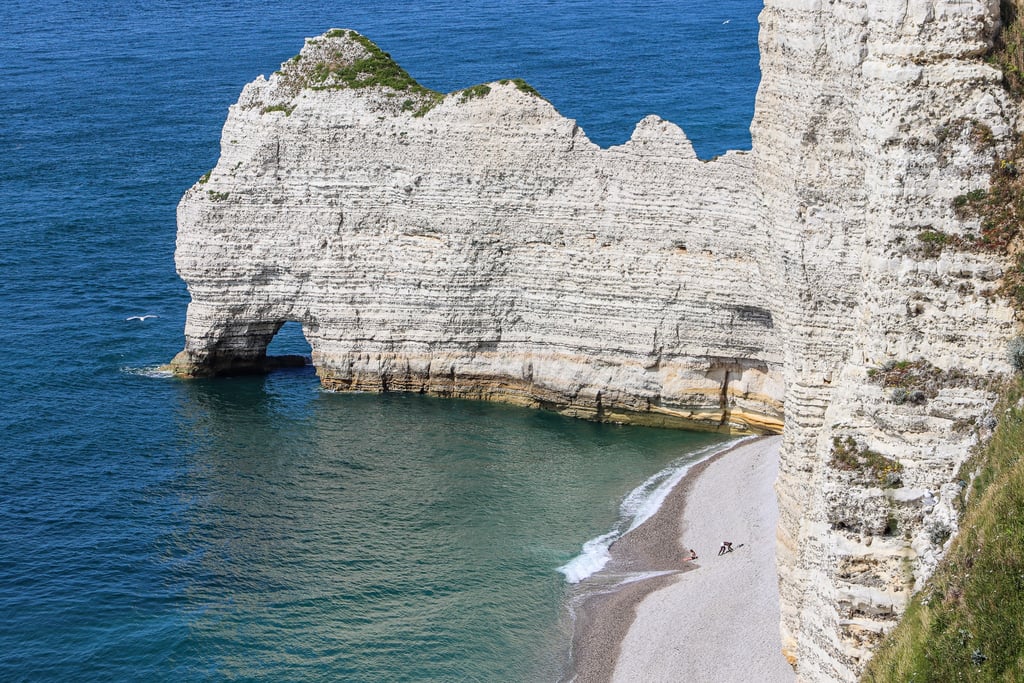

Étretat
Étretat is world-famous for its impressive limestone cliffs. The most well-known cliffs are La Falaise d'Amont (on the right side of the bay) and Falaise d'Aval (on the left side of the bay). We didn't have that much time so we opted for the first one, which luckily gave us the best view of the Falaise d'Aval. However, we can definitely recommend going up the left side of the bay, as the path along the golf fields ends between Falaise d'Aval and La Manneporte. The latter is an even bigger arch.
Many people go to the super famous Kelingking beach on the Indonesian island of Nusa Penida for these types of cliffs, but we think Étretat provides similar impressive views. It's intriguing how well you can see that France and England used to be attached millions of years ago, as the cliffs along southern England and northwest France are practically twins.
Honfleur
The old little town of Honfleur is famous for its picturesque harbour. It's lovely to stroll around town, along the harbour and through the little streets, because of all the beautiful old buildings. Honfleur is quite touristy, but as long as you don't go to a café or restaurant at the harbour, you can still find non-tourist traps (or just accept you pay too much for a mediocre coffee with a great view). We discovered a lovely little place called La Maison du Tripot, which served the most delicious homemade cakes (we enjoyed an amazing rhubarb crumble) and coffee. The terrace overlooked a beautiful hidden communal garden.
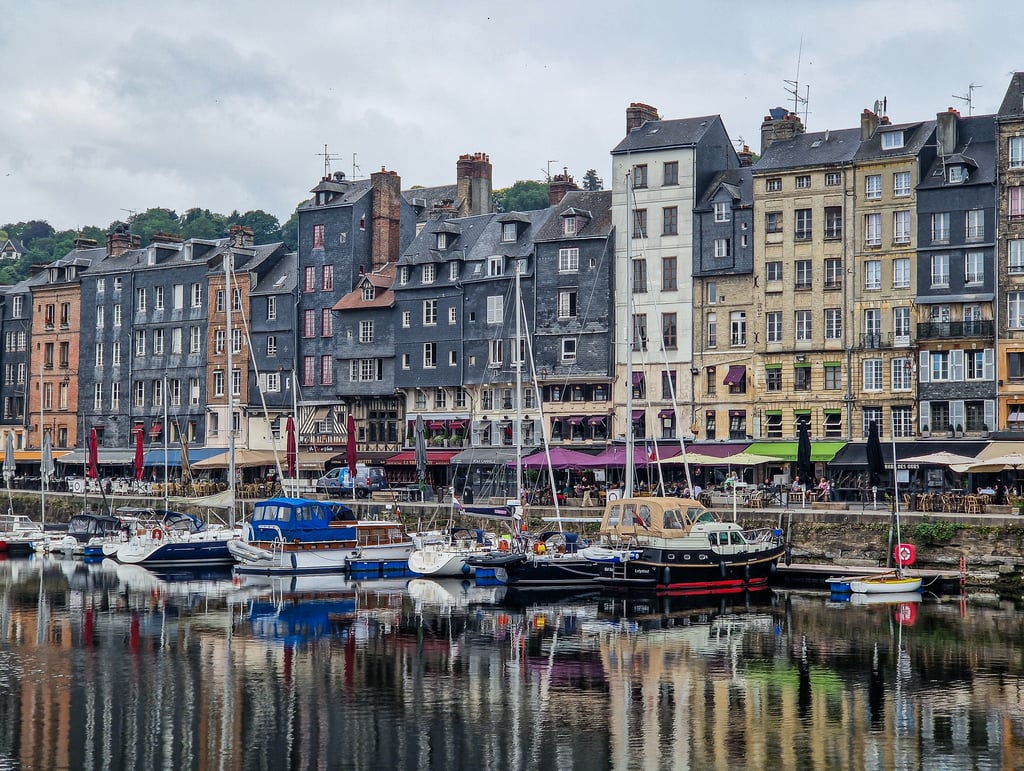



Deauville & Trouville-sur-Mer
Trouville is a very popular seaside town, it has that typical old grandeur like many old towns in this region. There are plenty of busy restaurants along the river where you can enjoy some of the best French Burgundism has to offer. We saw many French locals and tourists having a typical extensive lunch here.
The river forms the border between the town towns. Deauville is much quieter but has some beautiful buildings with wooden accents around the town's square. We very much enjoyed walking along the riverside promenade at Deauville, with lovely views of Trouville. We wouldn't describe these towns as 'must-sees', but they are nice to stop by when in the area.
Caen
Caen is one of Normandy's biggest cities. It has many impressive landmarks, like the town hall, the castle, the abbeys, and the Palace of Justice. There are also several wonderful squares and streets with cosy bars and restaurants. The lively atmosphere is partly due to the many students around. We found the bars around Rue Saint-Saveur especially lovely for a drink and a bite. Caen isn't too big, so it's easy to explore for a few hours. The city is also known for having one of the best World War II museums in France, namely the Memorial de Caen. Therefore, Caen is a great place to visit before you go to the nearby D-day landing beaches.
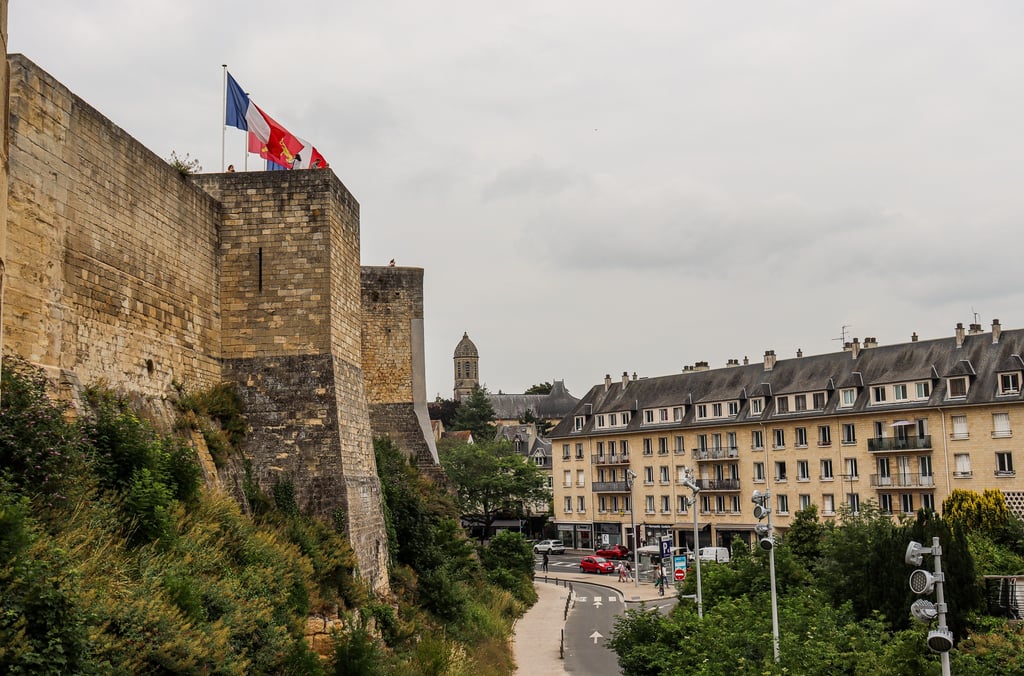




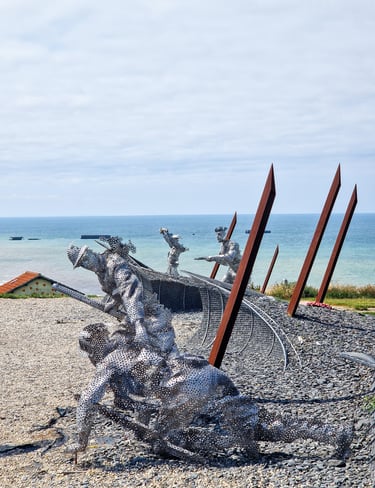
D-day memorial sites
A very short summary for those not very familiar with D-day: on the 6th of June 1944, the Allied forces made their way to the Normandy coast via air and water. There were five beaches where the troupes would land, mostly divided by country. Upon arrival, an artificial harbour was created. This way, heavy artillery could make its way to land, as the real harbours were too difficult to capture. The operation was bloody but turned out to be very successful and was pivotal to the ending of the war.
At most landing beaches you won't see much of this historic event, except for the memorial statues and museums. This is very different for 'Golden Beach' at Arromanches, as parts of the artificial harbour were left here and are still visible today. It is a very surreal experience to be able to see so much of this part of history. The fact that the remnants of the harbour are slowly eroding and are expected to completely disappear by 2100 makes it even more special. It can be hard to understand how young men, some even completely voluntarily, fought for other people's freedom with such high chances of dying. A visit to the D-day museum in Arromanches is recommended to learn more about this major military operation.
La Manche peninsula
La Manche peninsula might be the most beautiful and tranquil part of Normandy. It's practically one big nature area with broad dunes, stunning long stretches of beach, and picturesque small towns. It might not be everyone's 'cup of tea', but in case you prefer a bit more peace and quiet, this is a great region of France to explore. You can take it easy at one of the many beachside campsites or hop around the entire coast in just two or three days and make use of some of the lovely Chambre d'Hôtes (like the amazing La Bellevue Bréville).
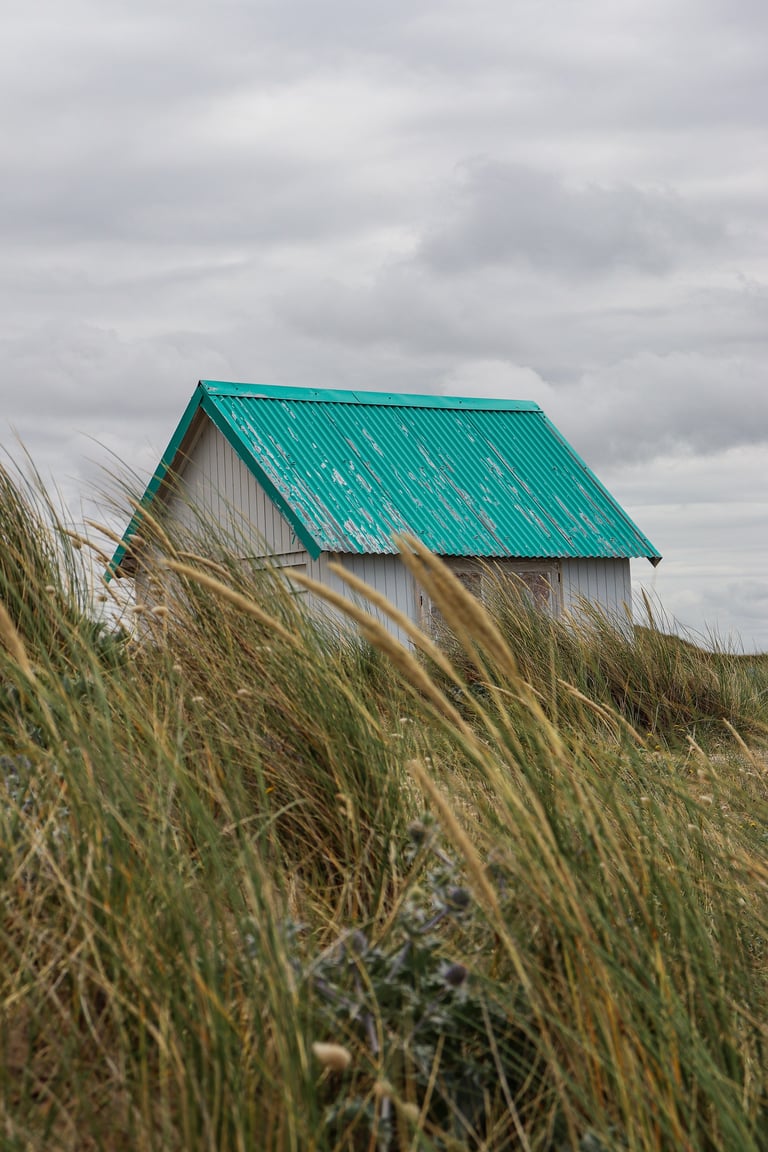

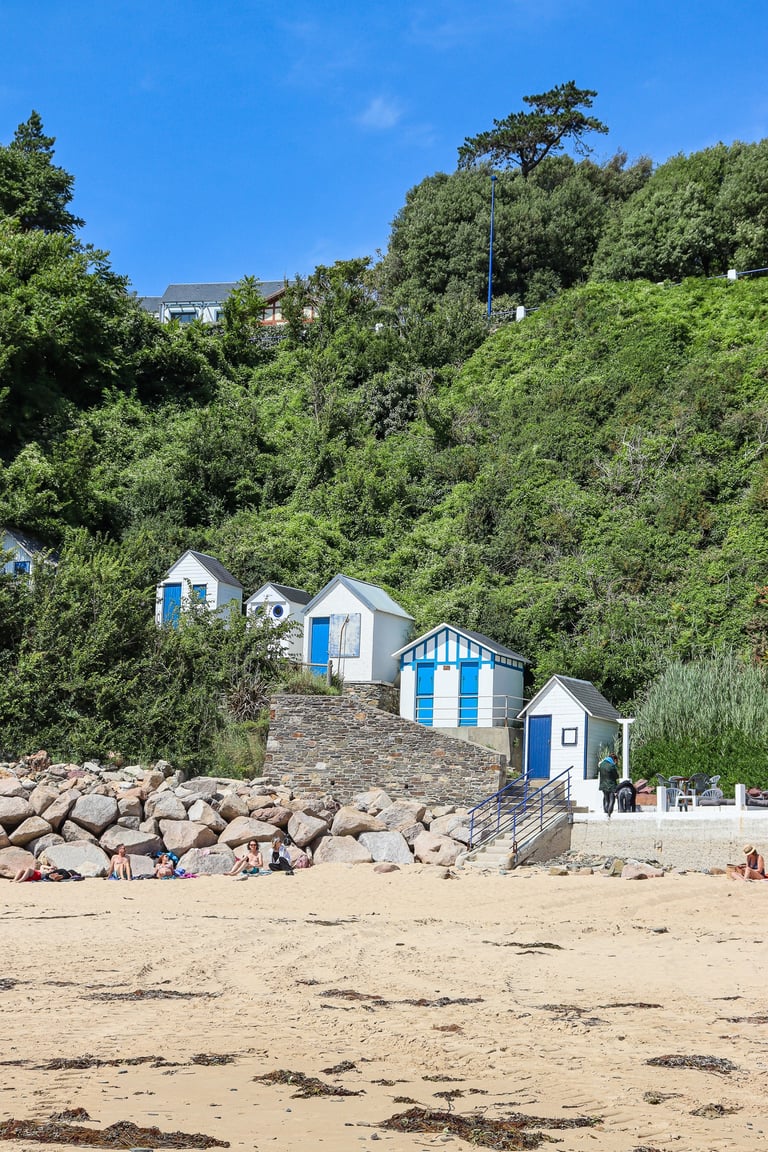

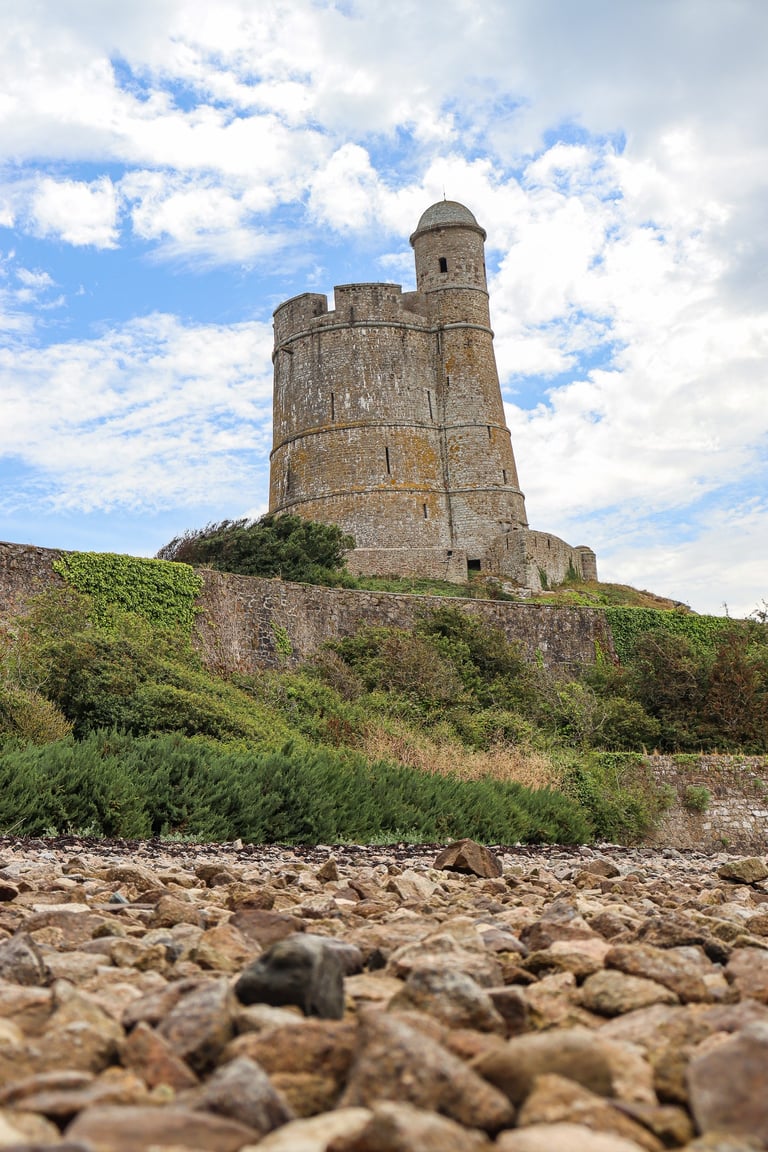

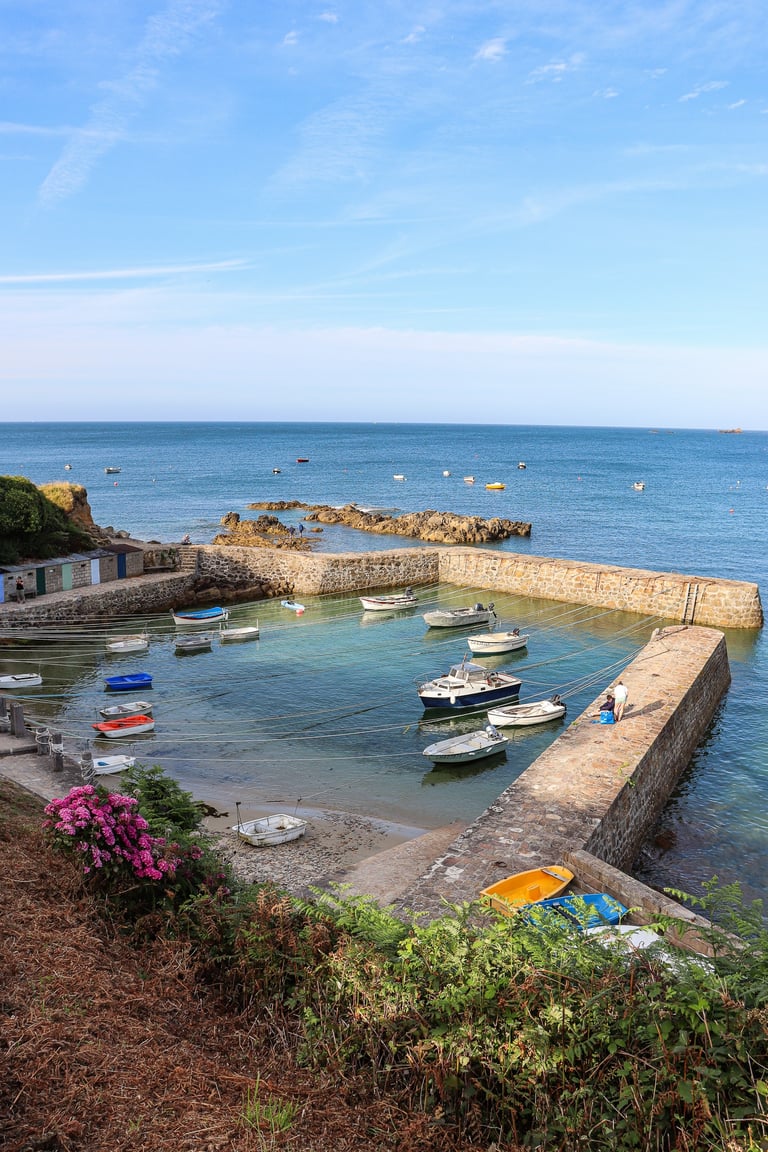

On the northern side of the peninsula places to visit are:
Nez de Jobourg: which has the most stunning views of the ocean and coastline. It's part of a scenic long-distance trail that stretches all of Normandy and Britanny. From here, you can easily see the Channels Islands (more on that at the end of this guide).
Baie d'Écalgrain: a beautiful and really quiet bay. Here you'll truly experience the lack of crowds in this underrated part of Normandy.
Phare de Goury: a beautifully located old lighthouse.
Port Racine: we were in doubt whether the smallest harbour in the country would be worth the visit but it ended up being one of our favourite spots in this region. It is such a lovely site with colourful sheds and boats, clear blue water and beautiful natural surroundings!
On the west side of the peninsula places to visit are:
Granville: especially the old part of town with a spectacular view of the ocean is worth a visit. From Granville, you can also visit the extraordinary Îles Chaussey (more on that in the next section).
Gouville-sur-Mer: there's not much to see, but most people pay a quick visit to this place because of the picturesque beach houses, each having a different bright-coloured roof.
Plage de la Potinière: also famous for its beach houses, which are all white and blue and stacked against a green cliff. There are some pretty spectacular dunes at the nearby Hatainville. At the old train station Terminus Carteret you'll find a fun little street food market!
On the east side of the peninsula, the places to visit are:
Barfleur: officially one of the most beautiful towns in France, but we had a hard time seeing this because of the very gloomy weather...
Saint-Vaast-la-Houge: here you can take an amphibian vehicle, across the oyster banks, to Tatihou Island. The Vauban tower and fort on this island are part of the Vauban defence structures, a World Heritage Site, which you can also see from the pier. On the mainland, there is another Vauban fortification, which you can admire more easily from up close.
The Chausey Islands
Les Iles Chausey is the name of an island group on the west side of the Manche peninsula. The islands are located in the Bay of Le Mont-Saint-Michel and are therefore exposed to the same extreme tidal range. During high tide, you can see only a few islands and pieces of rock scattered around, but at low tide almost the entire sea floor comes to the surface, creating a world of its own.

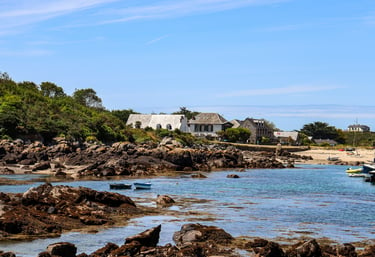
The best experience is to spend the night here, but because there are only a few accommodations, you probably need to book a year in advance. As we are spontaneous travellers, we didn't do so. We do have to admit that this does cut back on the experience. Maybe we will break our rule of spontaneous travel for an overnight experience of Chausey one day...
During high tide, there is no other option than walking around the main island, which is not too mind-blowing. The best way to see the smaller islands during that time is by renting a kayak, which does seem very fun. Make sure to have 4-6 hours between the ferry rides if you want to do so.
Le Mont-Saint-Michel
No matter how touristy a spot is, sometimes you just have to go with the flow. Le Mont-Saint-Michel has definitely become an attraction park. Think about huge parking fields, shuttle buses, crazily expensive hotels, and bad restaurants. Nevertheless, it is truly an impressive sight that we would still deem a must-visit. Places like this are crowded for a reason.
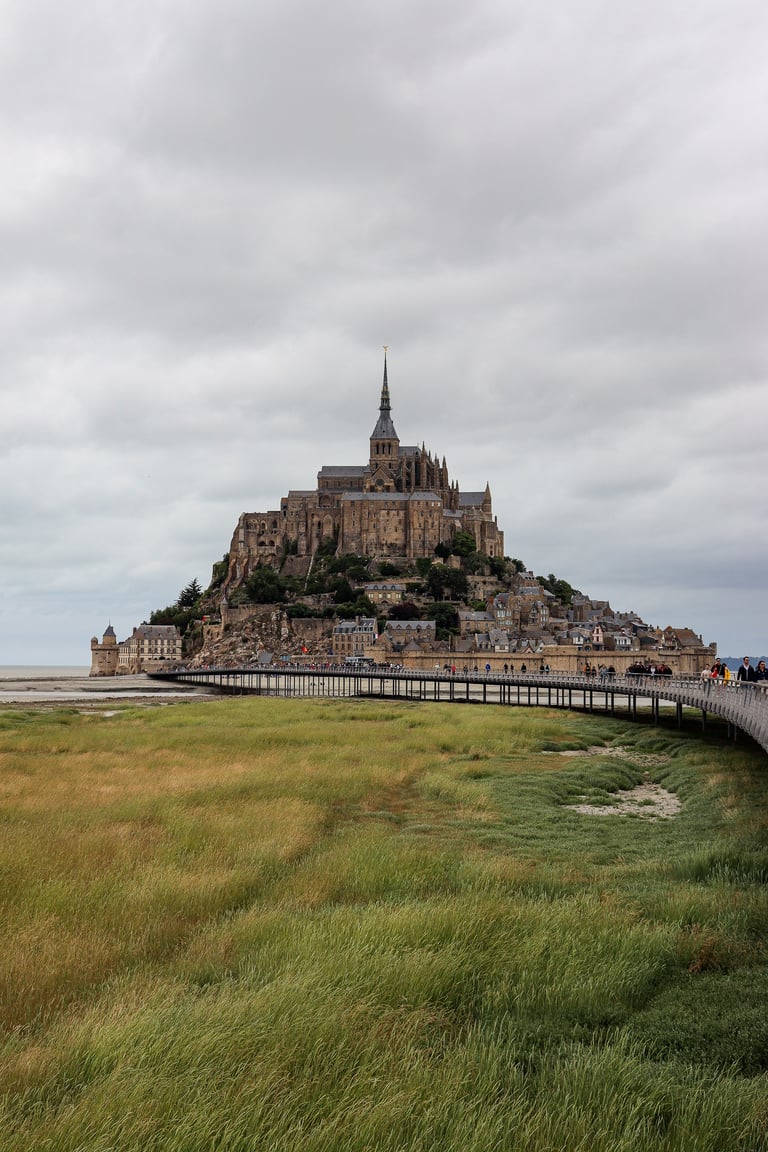

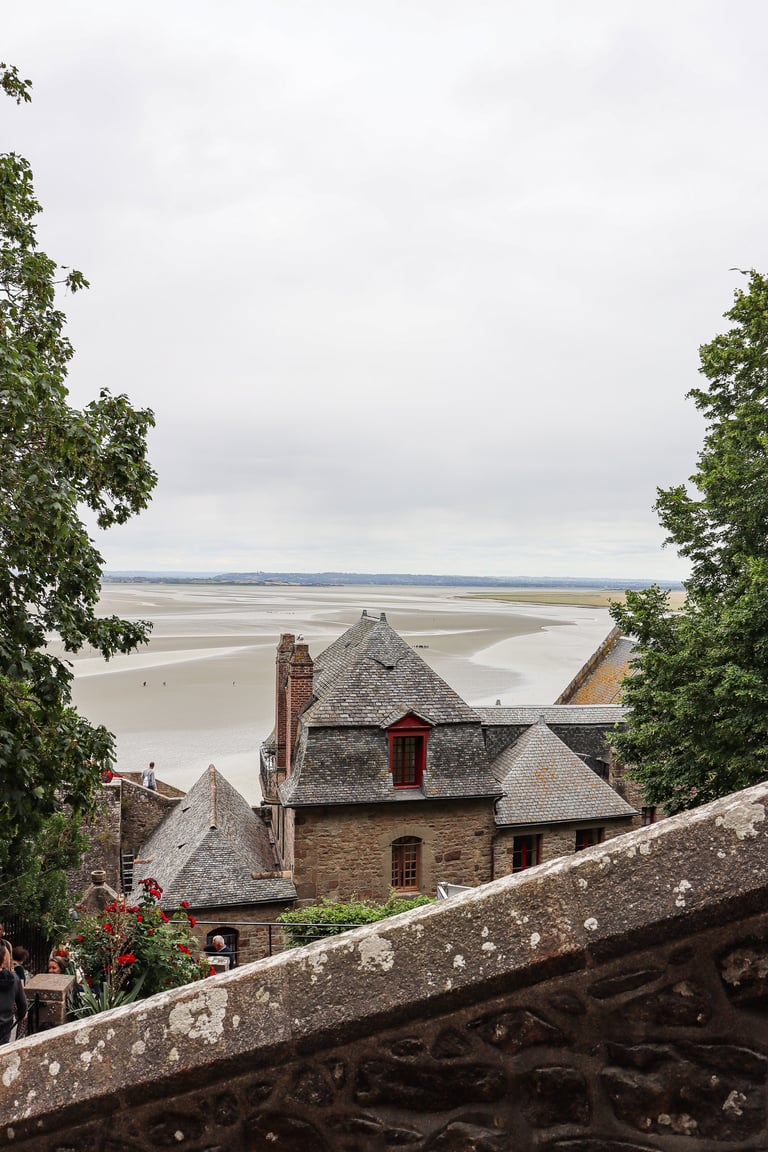

Apparently, half of the visitors don't even visit the centrepiece of Mont-Saint-Michel, namely the abbey on top of it. We have no clue why people don't, except for laziness. Not only will you have dodged most of the crowds by reaching the top, you'll also be rewarded with the most stunning views of the dramatic tidal landscape that surrounds the mount. Fun fact: the tidal range here is one of the biggest in the world. We especially loved walking back from the top through the tiny streets and finding hidden spots, which was a surprisingly tranquil experience as most people stick to the main street.
Possible additions
In case you want to extend your road trip, consider adding some highlights from the Brittany region and perhaps even a visit to the nearby Channel Islands. The Brittany additions can be seen in three days. We would add at least another week for a visit to the Channel Islands. We'll share the highlights below.
Cancale (Brittany region)
The town of Cancale is rather small but famous for its oyster market. Enjoy some oysters and wine at a picnic table and when you're done, traditionally throw the shells on the beach. The town is located on the so-called Cancale peninsula. You can easily hike from bay to bay on this beautiful peninsula. The walking path is part of the previously mentioned famous long-distance trail called 'Sentier de Douaniers'. The name stems from the customs officers who used to patrol the area for smugglers along the Bay of Mont-Saint-Michel and Brittany. The trail is more than 2000 km long.
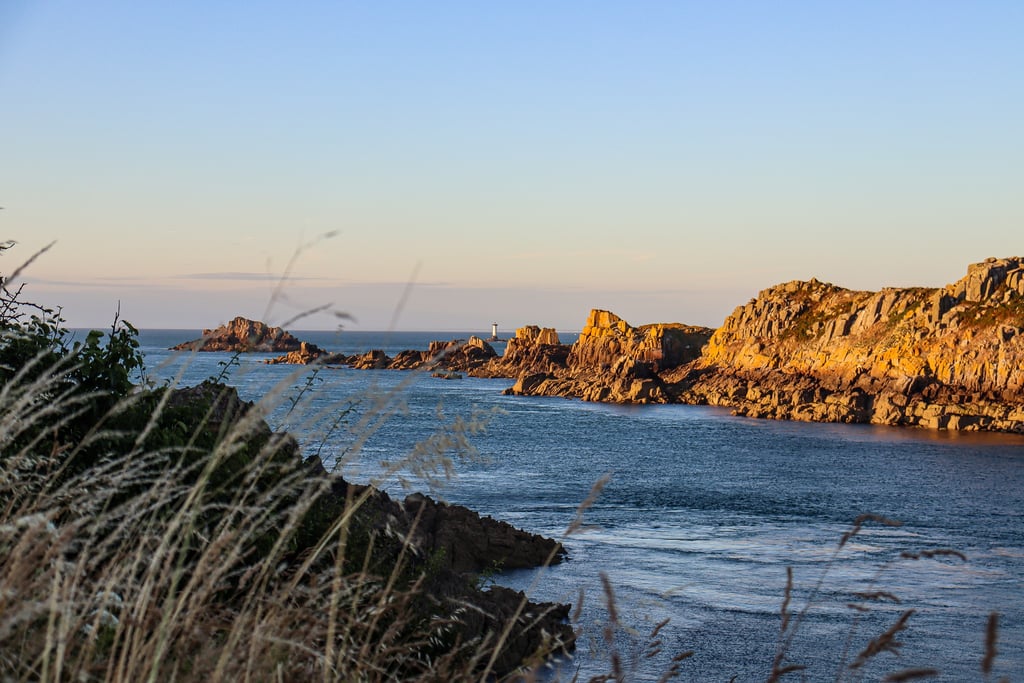

Pointe du Grouin is probably the most spectacular part of the Cancale peninsula. Off the coast, there is a beautiful rock formation in the shape of a dragon's tail. Especially at sunset, the views of the bay are stunning. In case you're lucky, you'll even spot a dolphin. There are several campsites around, which is perfect for a lovely evening stroll.

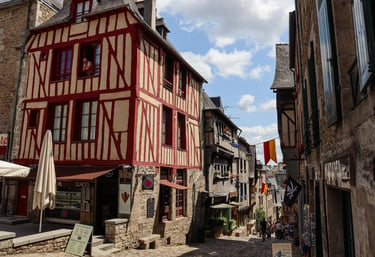
Dinan (Brittany region)
Dinan might be one of the most picturesque towns in France. The cobbled streets with medieval timbered houses are full of colour and mystery. It's like travelling back in time. When walking down from the cosy city centre with its beautiful squares and terraces and through the picturesque Rue du Petit Fort with the amazing Jerzual Gate, you'll end up at the Rance River. Here, you'll find lovely terraces and a little harbour. The view of the old viaduct is pretty spectacular as well.
Saint-Malo (Brittany region)
Saint-Malo is a beautiful walled city. It's also a port and therefore the gateway to the Channel Islands. Walking around the historic and cosy streets of the old city is a wonderful thing to do. The outside of the city is impressive as well, but almost impossible to capture nicely because of all the parking lots. Saint-Malo can be very touristy, so it's best to avoid it during the peak summer holiday season and/or the weekends.
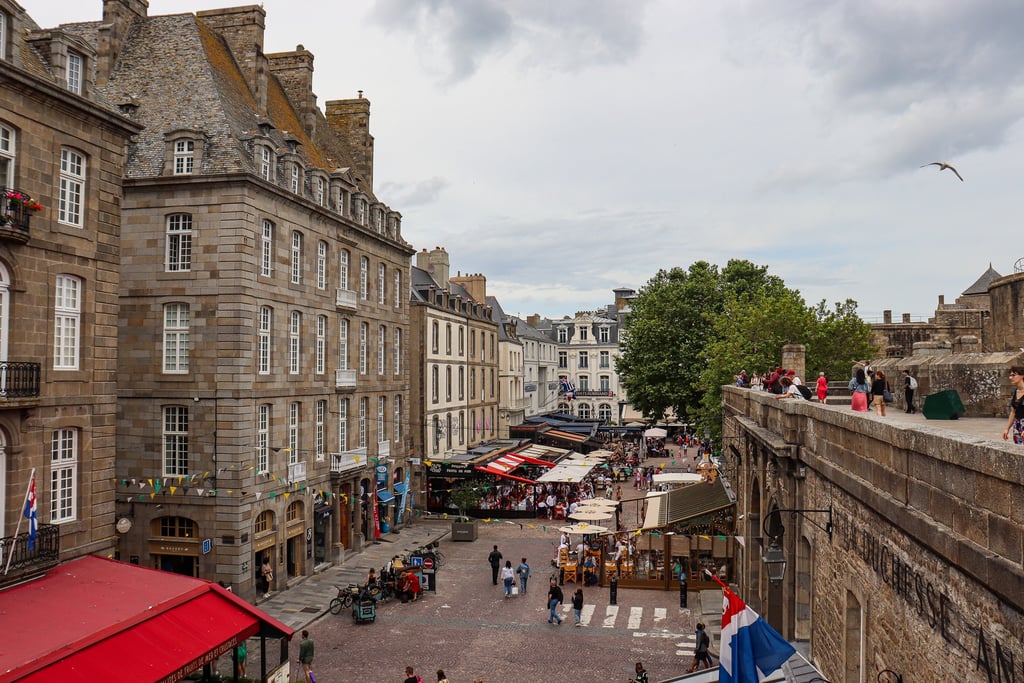

We came here on a Sunday in July to eat the famous Bretonic Galette (similar to crêpes) at one of the highest-rated restaurants but found out we would have had to wait for two hours... non merci! Therefore, we had some amazing Caribbean-style galettes at the tiny Crêperie La Caraïbe instead. For dinner, we highly recommend Le Berbère. Their tajine and couscous are just amazing and the staff is super kind. In general, going for Moroccan or Algerian food in France is a big tip. You can find one in almost every city because of the historical colonial ties.
When visiting Saint-Malo, consider staying in the beautiful La Haute Flourie B&B. It's located in a stunning old house that belonged to a famous French seafarer. The owners serve an amazing breakfast with homemade jams and honey from their garden.
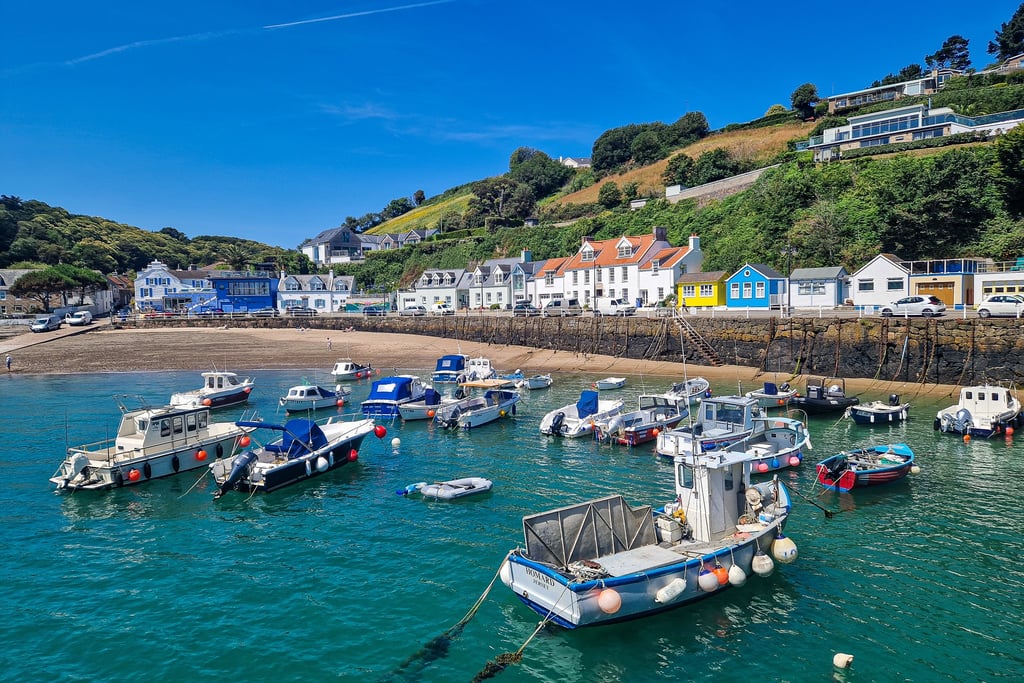

The Channel Islands
The Channel Islands are truly amazing. It offers a fun combination of Mediterranean-looking landscapes and British hospitality. We fell in love with the nature and cosiness of the islands. There is so much to see and do! The Channel Island group consists of five islands, in order of size: Jersey, Guernsey, Alderney, Sark and Herm. Jersey is only an hour away from Saint-Malo by ferry. Take a look at our elaborate Channel Islands travel guide for all the highlights and practicalities you should know about to make the best of your visit!



